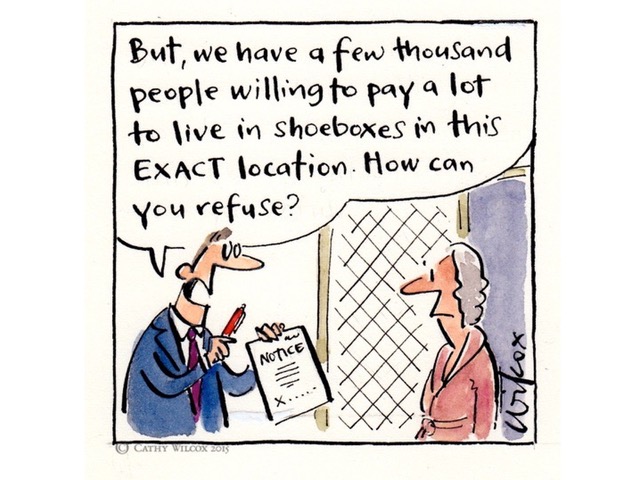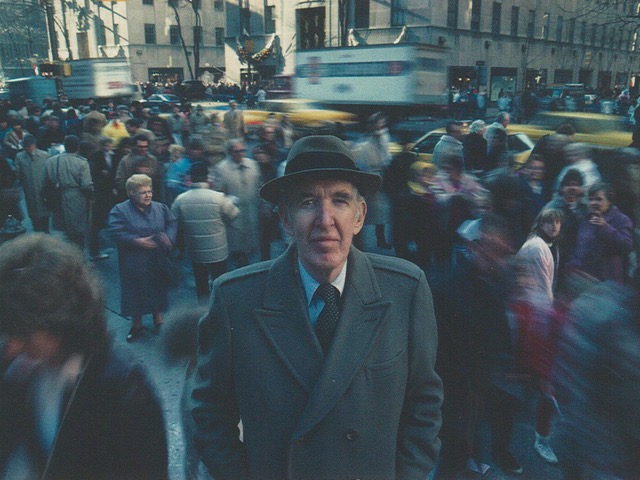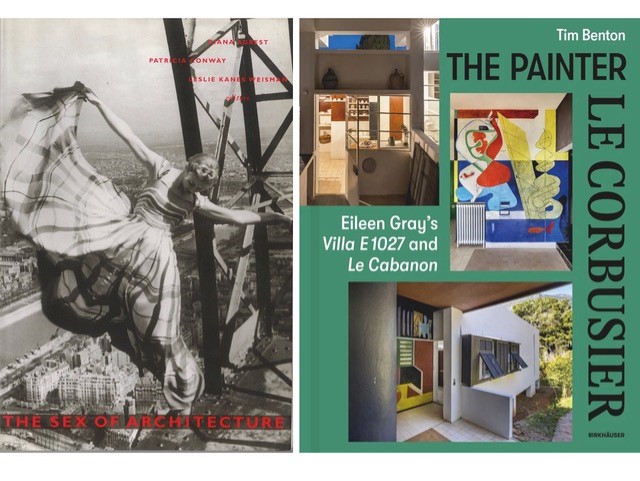
How to fix the housing crisis in 500 words (or less)
Last week, I examined the housing crisis in under 500 words. And what a mess it is, intractable and going backwards; each year we build less than the rising demand; any attempt to quickly solve it, by ramping up construction, is thwarted by the years it takes to develop housing schemes.
Nevertheless, here is my remedy to fix it, in the same number of words. In two stages: firstly, identify and act on short-term solutions to lessen the crisis; and at the same time, devise long-term goals and tactics for permanent housing solutions.
Short-term fix
We don't have a housing supply problem. We have more houses than households. We have a housing distribution problem; the shortfall caused by outright owners having secondary houses used for holidays or leased on Airbnb.
You solve the availability crisis by ending holiday lettings (by making them unprofitable, or even illegal), immediately. You solve the rental crisis with rent controls; caps based on the value of the property, or limits to increases, or other management mechanisms (below).
The long-term housing scene
The aim is for every household to own at least one house, if they want to, with average dwellings costing five to six times median earnings, not the current 10 to 15 times. Our future housing profile might be: 80% of household own (or buying) a home; 10% rent by choice; 10% live in subsidised housing (public / social / affordable). How do we get from here to there?
We know that the current profile is 33% own outright, 33% have mortgages and 33% rent. We need to enact change in all three sectors. Australians love tax breaks. So let's break some taxes.
For starters, let’s discourage property investment beyond two houses, using sticks: remove negative gearing and capital gains tax deductions. Then encourage home ownership with carrots: introduce tax breaks for first homers or owner occupiers, particularly for sustainability initiatives; and require the banks to offer loans at substantially lower rates to them, higher for investment properties.
Owner occupied homes become more plentiful, from new-builds or dwellings transitioned out of an investment portfolio; and the ‘sustainability tax discounts’ encourage improvements in the housing stock. Profit and capital gain, for no increase in real value, is ostracised, such that property investment ‘beyond two’ becomes harder and less profitable. Investment is diverted to better employment, civil and social causes.
The rental market is then re-jigged in two parts: high yield rentals attract higher taxes - an owner can still let out short term Airbnb’s, but the returns are diminished (along with the societal damage). The taxes need to be high enough to make them think twice, and the hotel and motel holiday trade is enhanced.
By contrast, long term rentals at reasonable rates are encouraged with by tax rebates. To get the discounts the dwelling has to be placed in the hands of a Community Housing Provider CHP, who controls rents, ensures that the property is maintained, and looks after tenants and owners concerns equally. Easily done, use a red tax pen and the well-established industry of CHPs.
For the 10% who cannot rent commercially, we build public housing, and lift the number from less than 4% to 10%, even in an increasing market. The rent must be no more than 30% of income after tax, but their housing must be as good as, and indistinguishable from, the local area.
We are starting to see some policy nibbles, but who am I kidding. It will take courage, and that’s got an even greater supply crisis.

Was Le Corbusier a monster?
Just as there is a brou-ha-ha about the relationship between Picasso’s abominable personal life and his undoubted great art, so we might ask the same about Le Corbusier. Picasso's reputation is in tatters in some quarters, and the issue was recently raised in an exhibition curated by Hannah Gadsby, which received faint praise and distinct damnation.
There are parallels; both expatriates in Paris; in the same era; undoubtedly great and influential artists; lionised in life; increasingly questioned posthumously. And we know P influenced C.
Like many, I grew up schooled on the Corb canon, and I pilgrimaged to many buildings on early travels OS (literally see above). I drank the Kool-Aid and was inured to criticism of his work, even by the great Reyner Banham in The Architecture of the Well-Tempered Environment.
But in 1993, an article rocked my monde, War on Architecture: E1027, written by Beatriz Colomina, and published in Assemblage, the magazine from Princeton University where she taught after studying in Valencia and Barcelona. She had already established a formidable name for her scholarship, conferences and writings on feminism and architecture.
In the article she alleged that Le Corbusier had defiled a house designed by Eileen Gray, called E1027, in Cap St Martin, southern France. She accused Le Corbusier of desecrating the walls of the holiday house, uninvited, with murals that were horrific in their mythic meanings: “The defacement of the house went hand in hand with the effacement of Gray as an architect.”
Twenty years later, however, the research work of Tim Benton and others posited an alternative view. The house belonged to Gray’s one-time partner, Jean Badovici, never her, and although she had largely designed it (with him) she had left the house by the time Le Corbusier was painting, and never returned. Badovici had invited Le Corbusier to decorate the interior with murals, and he participated in their development.
The artworks were celebrated by the owner, but are disturbing to many others (is that really a hidden swastika?). Benton refers to the moral failures in the house, but doesn't spell out what they might be.
The house had now opened to the public after being fully restored, including all the murals, although one is covered by a moveable screen, to take the room back to its original form. The book documenting this work is in Bookends.
I'm conflicted. His undoubted genius went hand in hand with hurtful hubris. I can’t unsee the immense power of Ronchamp, La Tourette, the Unités (all four), Firminy or the Villa Savoye. Even the relative dullness of the Tokyo Museum of Western Art or the Carpenter Centre. But I also can’t unread the Colomina and Benton tracts. And don’t even start on Picasso.

Non architects doing architecture: William Hollingsworth Whyte
I admire people who train as architects, don't practice, but excel in some other art, such as Australian humuorist Morris Lurie. Even more so, I'm fascinated by people who do not train as architects but have a huge impact on architecture. One of those is William Hollingsworth (Holly) Whyte.
He trained in sociology at Princeton in the 1930s, and after serving in WW2, and suffering dreadfully from malaria, he worked for 12 years in New York for Fortune Magazine. During that time he studied and wrote on human interactions and coined the word groupthink.
“We are not talking about mere instinctive conformity - it is after all a perennial failing of mankind. What we are talking about is a rationalized conformity - an open, articulate philosophy, which holds that group values are not only expedient, but right and good as well.”
Not long after he delved further into the American business psyche, conducting extensive interviews with CEOs of huge corporations like GE and Ford and in 1956, wrote The Organization Man, an enormous bestseller, and still a standard text on business.
In 1969, whilst working with the New York City Planning Commission, he started to focus his observations on the behavior of people in urban settings, using assistants with movie cameras and notebooks. His training and instincts as a sociologist helped him describe the actions of urban life in a way that had not been documented before.
This became the Street Life Project, an ongoing study of pedestrian behavior and city dynamics, which eventually led to his master work, The Social Life of Small Urban Spaces in 1980.
It’s absolutely worth reading. It informed the ideas of no lesser than Jane Jacobs and Jah Gehl, and led to the development of Bryant Park, a key space in New York. You can read more about his extensive work and influence in a recent book, American Urbanist by Richard K Rein, and a short introduction in this YouTube.

A Sally into Mustangs
It is only fair to examine number plates of ICE cars after lampooning EVs. And there is nothing more ICED than a Ford Mustang. At least their owners think they’re cool. With plates that refer to their pony, with lots of horses. Very droll. Not.

Bookends: The journal and book fight over E1027
As referred to above. Beatriz Colomina’s original article, War on Architecture: E1027, published in Assemblage, is available on the web through JSTOR. Left: It was reprinted with a different title as Battle Lines: E1027 in The Sex of Architecture, (pp 167- 182), edited by Diana Agrest, Patricia Conway and Leslie Kanes Weisman, pub. H N Abrams, 1996. Still available. Right, Tim Benton: The Painter - Le Corbusier, originally published in French in 2015, with support from the Le Corbusier Foundation and released English and German in 2021, and available in bookshops here this year.

Signs Off: Now we give you happiness.
Last week we gave you the Truth, this week it’s Happiness (Dubai, 2018).
Reference: A&D Another Thing week 25/2023
Tone Wheeler is an architect / the views expressed are his.
Long columns are Tone on Tuesday, short shots every Friday in A&D Another Thing.
You can contact TW at [email protected]

